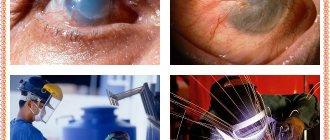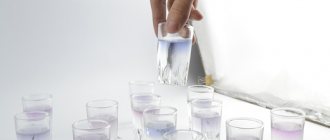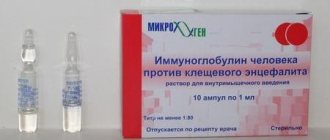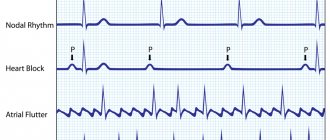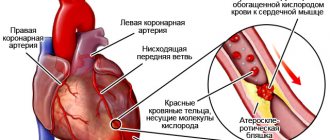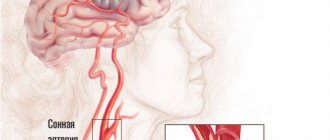A burn is damage to the integrity of the skin under the influence of an aggressive external factor. There are thermal, radiation and chemical damage. The latter is extremely dangerous, because the negative effect of chemicals extends to the entire body and even after timely first aid, the wound may worsen.
In a chemical burn, not only the top layer of skin is damaged; sometimes, under the influence of an aggressive reagent, soft tissue and even bone are destroyed.
There are two types of designated burns: domestic and industrial. The first includes injuries that can be sustained at home, because today in everyday life at the user level, a person comes into contact with various chemicals (acids, alkalis, gasoline, etc.). Burns received at home are usually not as deep and severe as those at work, therefore, restoration of damaged areas occurs much faster.
In production, people work with more aggressive substances, which always have high concentrations. Therefore, these injuries have serious consequences.
In addition, burns manifest themselves differently depending on what particular substance caused it.
Acids, in addition to the destruction of soft tissues, also lead to rapid dehydration of the body, as a result of which the scab that forms at the site of injury has a dense and dry structure.
Alkali has the ability to dissolve the fatty and protein components of cells, so this substance very quickly penetrates deep into the soft tissues. When burned with alkaline substances, the scab does not have clearly defined contours and has a soft structure.
Children and men are at risk for chemical burns.
Children and women are characterized by domestic injuries that occur as a result of careless handling of aggressive components or as a result of pranks.
Men usually receive such a burn at work.
General characteristics and signs of chemical burns
Various chemicals can have a destructive effect on tissue: acids, alkalis, salts of heavy metals. Most often, injury occurs as a result of careless handling of hazardous substances, as well as with the aim of causing intentional harm to health. When chemicals get on the surface of the body, they behave differently, and often the substance can be identified by the nature of the damage.
The mechanism of formation of a burn by alkali differs significantly from skin damage by acid.
In the article “Acid Burn,” we told you that when an acid solution gets on the skin, the destruction is accompanied by the formation of a dense, dry crust - a scab, which acts as a natural obstacle to the spread of the chemical into the deeper layers of the dermis. The wound surface has clear boundaries.
An alkali burn is characterized by deeper penetration into the tissue, since the scab in this case is soft (liquation necrosis) and the substance does not encounter obstacles on its way.
This reaction occurs due to the ability of dermal fats to enter into a saponification reaction with alkali, so the wound has blurred edges and tends to increase in size in depth and breadth.
A chemical burn has the following symptoms:
- Acute pain and burning. It may not appear immediately, but some time after the substance comes into contact with the skin, as soon as the reaction increases or suitable conditions are created. Hydrofluoric acid, nitric acid, and quicklime have such properties (it waits for water to enter in order to react). The sooner the substance is removed from the skin, the greater the likelihood of avoiding sad consequences.
- Increasing swelling.
- Itching.
- Local hyperthermia;
- Redness;
- Formation of a wound with a blister, and subsequently with a scab.
Depending on the substance that comes into contact with the skin, the symptoms may be supplemented; for example, hydrofluoric acid may be accompanied by signs of cardiac dysfunction, as it binds calcium. A burn of the esophagus with vinegar leads to increasing renal failure due to the hemolytic property of the acid.
Possible complications
The prognosis for full recovery is calculated based on the patient’s age, concomitant diseases, and the extent and depth of the lesion. A minor burn with sulfuric acid will pass quickly enough, but if the lesion covers a large percentage of the body area, then this condition will lead to the formation of severe scars not only in the affected area, but also beyond it. A person in this condition is limited in movement and the prognosis for recovery is significantly reduced.
Severe complications can arise in the fourth stage of the lesion. Acid in high concentrations can cause hemorrhagic pneumonia, which is fatal. If the reagent gets into the eyes, a person runs the risk of losing his sight. After a burn injury, various types of scars may remain.
Failure to follow safety precautions when working with sulfuric acid can result in serious burns and sulfuric acid fumes.
https://youtu.be/KHXUeEhJfrU
First aid for chemical skin burns
In fact, it only happens in films that after throwing acid on a person, the skin instantly collapses, falls off, and bones immediately begin to dissolve.
In reality, a chemical burn develops more slowly as the reaction increases and hydrogen ions bind to substances from our skin.
Therefore, immediate assistance plays a significant role in inhibiting this complex process, alleviating the victim’s condition, and saving his life.
The following data is considered important:
- nature of the substance: acid, alkali, heavy metal salts;
- solution concentration;
- affected area;
- anatomical location of the injury; perineum, and skin surface above the joints is especially dangerous
- duration of contact (especially important if the injured area was discovered the next day, and not immediately);
Basic rules for providing first aid for a chemical burn:
- If the substance gets on your clothing, get rid of it immediately. You should also remove all jewelry if you suspect there is a chemical on it.
- Rinse the affected area with plenty of running water for a long time. It is usually recommended to do this for 15-20 minutes, however, if painful symptoms persist after washing, the procedure should be continued. Hydrofluoric acid should be washed off for at least two hours.
- Reagents in powder form: quicklime, cement, potassium permanganate crystals cannot be washed off. They react with water, accompanied by the release of heat. Therefore, they should first be carefully removed with a piece of cloth or a swab; however, they should not be sprayed into the air by shaking them off: they can get into the eyes and respiratory tract.
- You can begin to neutralize the substance yourself if you know exactly what kind of component it is. Actions at random can cause significant harm. If the origin of the reagent is unknown, you should rinse the damaged area and wait for qualified assistance.
- Acid burns are neutralized with a 2% solution of baking soda, glycerin, and soapy water. The procedure is carried out repeatedly according to the “apply-rinse-repeat” principle. Hydrofluoric acid cannot be neutralized with these means; this should be entrusted to specialists.
- Alkaline burns are neutralized with slightly acidic solutions. From available means, you can use water with a few drops of lemon juice, a solution of citric acid, diluted 6% vinegar (half a teaspoon per half liter of water).
- Under no circumstances should you begin to neutralize a chemical without thoroughly washing it off your skin.
- In case of a corneal burn, first aid is provided only by thorough rinsing from the outer edge of the eye to the inner one. It is prohibited to use various drops, powders for instillation, ophthalmic ointments, tea bags and lotions. All prescriptions for further treatment can only be given to you by an ophthalmologist.
- After washing the skin and neutralizing the substance, a bandage is not applied; you can simply cover the affected area with dry sterile gauze.
- Chemical fumes cause burns to the respiratory tract. In this case, it is recommended to move the victim as far as possible from the source of danger and ensure a flow of fresh air.
- Medicines, ready-made bandages and plasters cannot be used immediately after an injury; the active ingredients in these medications may react undesirably with the burn factor.
- Drugs for the treatment of chemical burns are prescribed by the doctor, based on ideas about the nature of the traumatic agent, the degree of severity, the general well-being of the victim and the course of the regeneration process.
First aid
In case of a burn, care and first aid consists of neutralizing aggressive chemicals and removing them from the skin.
The algorithm for providing assistance is as follows:
- Remove clothing from the affected area.
- Rinse the affected area with plenty of running water. The processing time is at least 15 minutes. If emergency assistance is provided with a delay - this may be the time spent on freeing the victim from clothing - rinsing should be done for at least 40 minutes.
- Do not wipe the burn area with cloth or napkins.
- If the burning sensation does not stop, continue rinsing.
- Proceed to neutralize the aggressive substance. For this, alkali is used. In everyday life, use a weak solution of soda and laundry soap. Some substances - fluoride, phosphorus, nitrogen, sulfur - require specific neutralizers. The likelihood of using them in everyday life is low.
- First aid for a burn with sulfuric acid differs little from the algorithm for exposure to hydrochloric, salicylic, acetic and other chemically active substances.
If aggressive chemicals are swallowed, the victim should be given a weak solution of soda to drink. This is 1 teaspoon per 1 glass of water. If the eyes, face and visual analyzer area are affected, treat the tissue with plenty of running water.
If vapors of aggressive substances are inhaled, remove the victim to fresh air and rinse the mouth with an alkaline solution. This is the only possible first aid.
Chemical burn of the esophagus: clinical guidelines
Unfortunately, such an injury is absolutely not uncommon. Getting acid or alkali into the body is not always intentionally suicidal.
Quite often, children become victims of incidents: an interesting bottle of vinegar, a product standing in a prominent place for unclogging pipes and cleaning plumbing sooner or later attracts the attention of children and makes them want to try it. This leads to severe poisoning, damage to the oral cavity, esophagus, larynx, trachea, and gastrointestinal tract.
If a toxic substance is ingested, you should always seek immediate emergency medical attention, regardless of age or circumstances. The probability of death in such cases is very high.
The consequences of injury depend on the following factors:
- the nature of the solution (burns from alkali are more severe compared to acid burns);
- amount of liquid drunk;
- associated complications: development of respiratory failure, shock, organ failure.
Symptoms of a burn:
- sharp pain in the mouth and throat;
- inability to swallow;
- difficulty breathing;
- hypersalivation;
- lacrimation;
- severe hyperemia or pallor of the face;
- vomiting mucus and blood;
- confusion or loss of consciousness;
- convulsions.
First aid for chemical damage to the oral cavity and esophagus:
- lay the victim on his side;
- provide a flow of fresh air;
- rinse the mouth with water;
- Do not carry out measures to independently neutralize the chemical substance;
Swallowing with such an injury is usually impossible due to severe spasm of the esophageal tube, so you should open your mouth slightly and rinse with water using a pear-shaped balloon or syringe, followed by spitting.
The main assistance for a burn of the esophagus is provided by physicians based on the clinical recommendations of the protocol for the management of such patients. This includes:
- gastric lavage using a tube (if possible);
- pain relief with morphine, omnopon;
- parenteral (intravenous) nutrition in the first 3-5 days;
- endoscopic monitoring of the condition of mucous membranes;
- surgical removal of necrotic areas;
- hardware maintenance of vitality in case of organ failure (ventilation, hemodialysis, etc.);
- prevention of cicatricial stenosis using bougienage (immersion of a thin tube into the esophagus);
Elimination of the consequences of such a burn largely depends on the patient’s condition, and management tactics are carried out as various symptoms manifest themselves.
What not to do
Often, there are cases when people try to get rid of residual acids or alkalis using a cotton swab or napkin, which is pre-moistened with water. They rub the affected area, hoping to remove the entire layer of chemicals. Doctors warn that this is strictly forbidden, since these actions can only aggravate the condition and help the substances penetrate deeper into the soft tissues (a chemical diluted with water is absorbed faster by the skin, and rubbing with force pushes them inside).
If the initial rinsing does not help relieve the pain, and the burning sensation continues to bother the victim, doctors advise not to stop rinsing until relief occurs. After treatment with water, care must be taken to neutralize the remaining chemicals.
Everyone knows from school chemistry lessons that an acid is neutralized by an alkali, and an alkali is neutralized by an acid (not difficult to remember). The harmful effects of acid can easily be neutralized by applying a gauze cloth soaked in soap or 2% soda solution. Burns from alkalis are removed with the same swab, only moistened in a slightly diluted aqueous solution of vinegar (in extreme cases, with citric acid).
To reduce the intensity of pain, it is better to apply a piece of cloth soaked in water to the burn. After this, you need to apply a clean bandage (ideally, a sterile bandage is needed). If the injury is not severe, it will heal on its own, without the use of drugs.
Chemical burn of the esophagus: consequences
Unfortunately, the mortality rate of such cases is very high. If the victim can be saved, the injury leads to disability and the development of pathologies:
- stenosis of physiological narrowings of the esophagus (if the process cannot be corrected, this part is replaced with an endoprosthesis);
- chronic diseases of the gastrointestinal tract: erosive and ulcerative gastritis, pancreatitis, liver pathologies.
- connective scar tissue of the mucous membranes is prone to rapid malignancy;
- chronic renal failure;
- disorders of the cardiovascular system;
- post-traumatic mental disorder.
In general, the quality of life after a chemical burn of the esophagus, even of degree II, suffers significantly and requires regular medical monitoring. Therefore, special attention should be paid to the rules for storing such substances in the house.
First aid supplies
Before using any anti-burn therapy, you should consult your doctor .
Medical supplies:
- Fusiderm is an ointment that has a bactericidal and bacteriostatic effect, as well as stimulating tissue regeneration in the affected area.
- Panthenol or sea buckthorn oil can help - they disinfect and increase tissue restoration.
Folk remedies for chemical burns are used mainly after medical care. They are necessary for the healing of affected areas of the skin or mucous membranes of the gastrointestinal tract.
Traditional treatment methods are:
- Compresses with soda - to prepare, dissolve 7 grams of baking soda in 200 ml of cool water. Soak a piece of bandage folded 4-5 times in the solution, apply it to the affected area and secure. Such a compress will help reduce pain, prevent secondary infection and the development of the inflammatory process.
- Aloe compress - take a plant leaf of the required size, cut off the outer layers or chop it. Next, the plant is applied to the burn area and fixed for 2 hours. Aloe will speed up tissue restoration and help eliminate pain.
- Toothpaste with mint or menthol - apply a generous layer of toothpaste to the burned area, which should be washed off after 1-2 hours. This simple remedy helps relieve pain and also prevents the occurrence of blisters.
- Herbal compresses – to prepare a healing compress, chamomile inflorescences or oak bark are brewed. In the finished and cooled broth, a bandage or cotton pad folded several times is moistened and applied to the affected skin for 15-20 minutes. You can repeat such procedures daily up to 5-6 times until complete recovery.
https://youtu.be/ukVs_ujP-Tg
Potentially Hazardous Household Chemicals
We don’t always think about the fact that common household chemicals can pose a threat to life and health. Especially for you, we have compiled a list of products that should be kept out of the reach of children and precautions should be taken when using them.
Alkalis:
- ammonia solution, ammonia;
- caustic soda;
- quicklime and cement;
- bitumen;
- any plumbing products (contain chlorine, caustic soda).
- Acids:
- lemon;
- vinegar (70% essence is especially dangerous);
- sulfuric;
- salt (as part of cleansing products);
- sorrel;
- formic;
- Some medications and contact with poisonous plants also lead to chemical burns.
Medicines:
- alcohol solution of iodine;
- dimexide;
- irritating and warming agents: finalgon, capsicam, Zvezdochka balm, YAM (currently used extremely rarely);
- potassium permanganate (undissolved crystals);
- Ferezol and Verrukacid (contain phenol - organic alkali);
Plants:
- nettle;
- garlic and onion (juice);
- hogweed
Particularly extensive and deep burns occur from hogweed. The juice of this plant has a photosensitizing effect on the skin, that is, it increases sensitivity to sunlight.
Therefore, when in contact with this plant, you should protect the damaged areas from ultraviolet radiation, as you risk adding thermal damage to the dermis, accompanied by the formation of a blister and deeper tissue damage. These injuries cause serious damage to health; there are frequent cases of hospitalization after a hogweed burn.
A nettle burn is usually painful and is characterized by the formation of small blisters that go away on their own within a few hours or within the first 24 hours if you do not scratch.
The fact that garlic and onions can cause burns became known thanks to folk medicine. Thus, instilling onion juice into the nasal passages to treat a runny nose leads to serious damage to the mucous membrane and the development of chronic and vasomotor rhinitis.
And treating toothache by tying a cut clove of garlic to your wrist at night deeply injures the skin in this area.
There is no specific treatment in such cases; it is better simply not to use questionable methods, and especially not to expose children to them.
What substances neutralize the effects of various acids?
The principle of neutralizing aggressive acid remains the same - exposure to an alkaline solution.
| Acid | Neutralizing agent |
| Sulfuric | At home, only a solution of baking soda and laundry soap. |
| Nitrogen | Baking soda solution. |
| Boric, citric, acetic are weak acids. Only vinegar essence can cause significant harm to the body if it enters the gastrointestinal tract | Baking soda solution. If it enters the digestive tract in a hospital setting, it is recommended to use magnesium bicarbonate. |
| Salicylic acid – used for peeling | For home treatment, they sell products containing no more than 10% salicylic acid. Simply rinse off with plenty of water. |
| Carbon or coal is an extremely weak compound. In the presence of heat, it breaks down into water and carbon dioxide | Does not require neutralization, is an unstable compound. |
Treatment of a chemical burn
With superficial damage to the epithelium, without the formation of blisters and ulcers, no special therapy is required. It should be noted that the first degree of chemical burn is the only one favorable in terms of course and prognosis. It usually occurs when the skin interacts with a weakly concentrated acid and is limited only to burning and redness.
In degree II, the papillary layer, which is responsible for the formation of skin cells, is damaged. Chemical burns of this severity take longer to heal than thermal burns and are prone to ulceration, infection and scar formation.
If the wound size is more than 7.5 cm2, you must consult a doctor for treatment appointments. Anti-burn ointments under the bandage are usually used: levomekol, panthenol, argosulfan, etc.
Damage to the hypodermis and muscle layer, which correspond to grades III and IV of severity, more often occurring upon contact with alkali, requires medical supervision and is treated in an inpatient setting. They are often accompanied by shock and sepsis. Due to the deep nature of the injuries, they do not heal on their own; they are treated promptly.
Burns of the face, eyes, esophagus, groin, and surface of the flexion zones always require seeking medical attention. And ingestion of chemicals is a medical emergency.
Unfortunately, such injuries are accompanied by the formation of a scar, the elimination of which is carried out conservatively or by excision, depending on its specifics.
Thus, the keloid formed after healing can cause discomfort, manifested by itching and soreness. In addition, scars certainly cause aesthetic discomfort.
We told you in more detail about how to treat a burn in our previous publication.
In what cases can you not do without an ambulance?
Very often, victims of chemical substances need the help of a doctor, so they need to call an ambulance. This is especially important in the following cases:
- The victim lies unconscious, the skin is pale, breathing is shallow. To be honest, the victim shows typical signs of shock.
- The burn occupies a large area (more than 7.5 centimeters) and it has penetrated into the subcutaneous tissue.
- The lesion occurred in the groin area, on the limbs, buttocks, the substance got into the face or mucous membranes, and the skin in the projection of the joints was damaged.
- The victim complains of acute pain that cannot be relieved with painkillers such as Ibuprofen.
Complications from a burn
An example of complications on the cornea and sclera after an eye burn.
The pathological process after a burn is often protracted with relapses of inflammation. Corneal regeneration does not end with complete restoration of connective tissue with suppression of the inflammatory process.
Complications of the healing process of corneal tissue include deterioration of vision, repeated inflammation or erosion of the cornea, and hardening of the tissue long after surgery.
In severe cases, glaucoma may develop, which leads not only to decreased vision, but also to loss of the sense of color. And disturbances in the normal metabolism in the organ of vision lead to a deterioration in its supply of nutrients. Often the injury manifested itself years later as a depressed state, or overexcitement of the patient in the form of a decrease in blood pressure.
https://youtu.be/qwjJJYnZ4EE
Hydrochloric acid burn
May lead to grades III and IV of severity. This substance is also dangerous due to its fumes, which can cause damage to the respiratory and visual organs.
At home, such injuries can occur when hydrogen chloride is used as an aggressive cleaner for plumbing fixtures.
When the substance gets on the skin, it causes unbearable pain, the immediate formation of yellow blisters, which subsequently form a dense crust, and necrotic areas appear. Under a scab, the destructive reaction can continue for a long time, up to two days.
Ingestion of concentrated hydrochloric acid has a high probability of adverse outcome.
Electric shock
Such damage can occur through contact with electrical appliances and lightning. Such a burn rarely provokes destruction of the upper layer of the epidermis, but causes damage to internal tissues. During the initial examination of the victim, it is difficult to determine the extent of the injury received.
The greatest danger to humans is voltage of about 1000 W. It leads to clothing burning, loss of skin sensitivity, and severe swelling. Deep tissue damage can cause loss of consciousness and death .
When providing first aid you must:
- Stop exposure to current immediately. If you cannot turn off the device, you should push the person away from it with a piece of wood. It is forbidden to touch the victim with your hands to avoid receiving an electric shock.
- The patient should be placed on a hard surface, a cushion should be placed under the neck and the head should be turned to the side.
- Give him a sedative, for example, motherwort drops. To support the heart, place a Validol tablet under your tongue or dilute 15 drops of Corvalol in water.
- If the patient has lost consciousness, is breathing intermittently, or has no pulse, you need to perform artificial respiration, cardiac massage and urgently call an ambulance.
- If there is damage to the skin, first aid is provided in the same way as for thermal burns.
Sometimes the victim is in a state of shock, does not feel pain and says that everything is fine with him. In this case, the task of those around him is to convince him that medical help is necessary.
Electrical burns cause a dangerous complication - myocardial infarction, the symptoms of which may take several hours to appear.
Sunburn
Prolonged exposure to ultraviolet radiation aggressively affects the skin, causing burns to its top layer. When visiting the beach, the arms, shoulders, face and nose most often suffer, as they are constantly exposed to the sun's rays. Damaged skin turns red, swelling, pain, blisters appear, and body temperature rises.
- If you feel a slight tingling of the skin, you need to immediately hide in the shade, get dressed or go indoors.
- The first aid will be a cool shower. The water temperature should be about 23 degrees.
- After the procedure, you need to apply a cold compress to the sore areas for 15 minutes. To relieve irritation, it is useful to use Furacilin solution as a lotion.
- After the compress, allow the skin to dry on its own and apply moisturizer. It is advisable that it include herbal extracts and vitamin E. Severe burns can be treated with Panthenol.
It is recommended to take Aspirin or Ibuprofen internally . They relieve heat and soothe pain.
Salicylic acid burn
An unjustified increase in the concentration of salicylic acid in home cosmetology leads to quite serious damage to the epidermis. The acne treatment product is produced with a concentration of no more than 10% to eliminate the risk of burns.
However, with improperly performed deep salicylic peeling (which involves the use of a 30% solution), such a side effect is far from uncommon. Burns of the external skin with salicylic acid are accompanied by itching, burning, redness of the skin, followed by the formation of a brown or dark pink scab. After the crust comes off, a wound surface prone to bleeding is exposed.
The healing process takes a long time and, with proper treatment, leaves no traces. Concentrated salicylic acid, when taken orally, causes deep damage to the mucous membranes and poisoning. Contact with eyes and respiratory tract is also severe.
Characteristic signs of burns caused by different types of acids
Tactics for chemical burns caused by various substances
Injuries caused by contact with acids most often occur on exposed areas of the body. The exception is acetic acid burns affecting the tissues of the esophagus and larynx. In case of superficial injuries, the type of acid is determined by the nature of the changes occurring in the skin:
- After contact with sulfuric acid, the epithelium first becomes white and then turns gray. As the skin continues to be exposed to the chemical, the color of the damaged area turns dark brown. Contact with acid causes severe pain.
- A peculiarity of burns with nitric acid is a change in skin tone to yellowish-green, which later turns into brown. The severity of pain depends on the time of exposure of the chemical to the tissues of the human body.
- Contact with hydrochloric acid causes yellowing and ulceration of the skin.
- Exposure to concentrated acetic acid causes darkening of the skin and mucous membranes.
- Contact of carboxylic acid on the skin causes the epithelium to change color to white. Over time, the affected area becomes reddish-brown.
What not to do if you have an acid burn?
Unfortunately, often incorrect actions at the time of providing first aid can cause significant damage and aggravate the situation.
Let's look at the main mistakes and rules of what NOT to do in case of an acid burn.
- Use cooling gels and first aid wipes. The fact is that the compounds in their composition can enhance the chemical reaction.
- Apply any antiseptics and other medications. Until the reaction has stopped, there is little point in taking measures aimed at preventing germs from entering the wound.
- Induce vomiting if acid is swallowed. The contents may enter the respiratory tract and cause a burn there.
- Some sources recommend using milk or egg white to stop the reaction. Don't experiment. Don't make it worse. Washing with water is sufficient. Long lasting.
- If the substance gets into your eyes, you should never rub them - this will cause the acid to spread throughout the cornea.
- You should not cover the affected area with bandages yourself; provide it with full access to oxygen; the medical workers who arrive in time will professionally determine the procedure and further treatment.
- Don’t think about traditional medicine - no oils, starches or tinctures. Each substance has certain chemical properties and you cannot predict how the acid will react to them.
- Do not ignore seeking qualified help. Chemical burns heal extremely poorly, become easily infected and leave scars. Successful first aid does not eliminate the need to contact a specialist. It is not always possible to immediately determine that the reaction has stopped; it can slow down and occur secretly in the tissues.
- If you have a severe burn to the esophagus, you should not try to rinse the stomach yourself. Moreover, following folk recipes, give milk - it will quickly curdle upon contact with acid and complicate the probing process when providing professional assistance. Soda solution can also be harmful. Surely you have seen what happens when you combine, for example, soda and vinegar. The reaction is accompanied by a powerful release of carbon dioxide, which can injure the esophagus and even lead to its perforation.
Depending on the substance that caused the injury, the degree of damage and increasing symptoms vary.
Features of acid burns
Chemical burns are characterized by specific symptoms. Burns from acids and alkalis have different effects when they come into contact with the skin.
The acid destroys proteins, dehydrates tissue, which causes scabs with a red border to form. From exposure to sulfuric acid, a white crust forms, which over time turns green-blue and black. A burn with hydrochloric acid provokes the appearance of a brown-yellow soft crust, which hardens over time.
A burn with citric acid does not have a destructive effect: upon contact with the skin, redness and mild pain appear. There are no changes in well-being.
Boric acid has long been considered harmless. It is often used in pediatrics. burn from boric acid , but poisoning by toxic fumes is often observed. The reagent is broken down in the body, affecting brain cells, mucous membranes, hematopoietic and germ cells.
Alkali contains fatty molecules that destroy the protein structure. Damages from alkaline burns are more serious: the chemical reaction takes longer, and the deep layers of skin and fiber are destroyed. The crusts at the site of the lesion are soft, white, and have no outline. Alkali burns are characterized by severe pain.
Degree of skin burn with alkali
Types of chemical skin damage
Burns are classified by the type of chemical and the degree of tissue damage.
Classification of burns by degree.
Acid burns are most often superficial with the formation of a scab (a dry crust of dead tissue, clotted blood and pus) and a clear transition line between the damaged and healthy area of the skin.
Alkaline burns are more dangerous than acid burns: they not only affect the skin, but also penetrate deep into the tissues, forming bleeding wounds.
Based on the severity of the lesion, there are 4 stages:
- A mild burn with redness and slight discomfort.
- The victim is bothered by pain and burning, and blisters filled with intercellular fluid form at the site of injury. With adequate treatment, there are no marks or scars left on the skin.
- Contact of the reagent with the skin causes tissue necrosis and the appearance of a scab.
- The chemical penetrates the skin, damaging muscles and, in some cases, tendons and bones.
The subsequent regeneration of the affected tissue depends on how quickly and skillfully first aid is provided for burns with substances with a high concentration of alkali or acid.
https://youtu.be/HFuNDBWHf0s
Degree of eye burn
Almost all chemicals can irritate the mucous membranes of the eye, but serious damage occurs upon contact with strong alkalis and acids. Alkali burns occur most often, but they are also the most dangerous, especially with bilateral damage. Often such injuries result in visual impairment.
The severity of a chemical burn will depend on the volume, temperature and concentration of the irritant, duration of exposure and degree of penetration. In some circumstances, the person's age is also important: in general, children tend to have more severe burns.
There are four degrees of eye burn, but the mechanism of damage by alkalis and acids is different. The initial assessment of burn severity is based on the degree of corneal transparency and the severity of ischemia (blanching).
Degree of eye burn:
- First degree (favorable prognosis). It is characterized by the absence of ischemia and the transparent state of the cornea.
- Second degree (good prognosis). Ischemia affects a third of the limbus, there is clouding of the cornea, but details of the iris are visible.
- Third degree (ambiguous prognosis). There is clouding of the corneal stroma, the epithelium is completely lost, ischemia from a third to half of the limbus masks the details of the iris.
- Fourth degree (poor prognosis). Ischemia affects most of the limbus, and there is total opacification of the cornea.
Additionally, the filling of limbal vessels is considered. When determining the degree, the extent of destruction of the corneal epithelium, the presence of symptoms of conjunctivitis, the condition of the lens and iris, as well as indicators of intraocular pressure are also taken into account.
Algorithm of actions in case of thermal injury
Heat injuries are caused by exposure to high temperatures. This may be contact with steam, boiling water, hot oil, or open fire.
For the first two degrees of damage, treatment in a hospital should be:
- children,
- To old people,
- patients suffering from diabetes and other endocrine diseases,
- if a thermal burn is diagnosed on the face, groin,
- when the respiratory system is affected,
- for injuries affecting a large area of the body.
Grades 3 and 4 injuries require mandatory treatment in the burn department.
In case of skin damage
Burns of thermal origin require the following measures:
- Urgently interrupt the victim’s contact with the source of injury and call an ambulance.
- Remove clothes from the body. If it sticks, carefully trim the tissue around the affected area with scissors and soak the remaining tissue with cold water.
- For a 1st or 2nd degree burn, place the damaged skin under running cool water and hold for at least 10 minutes. This will help cool the wound and stop tissue death.
- Disinfect the burn with Furacilin solution, hydrogen peroxide or Chlorhexidine.
- Treat with antibacterial ointment. Recommended: Panthenol, Levomekol, Bepanten.
- Apply a sterile bandage.
- If an open wound has formed, you should carefully place damp gauze on it and do nothing until the doctor arrives.
It is useful to mix half a teaspoon of salt and a pinch of baking soda in 0.5 liters of water and give the victim a drink. If acute pain and burning are bothering you, you are allowed to take any painkiller .
In case of eye damage
The retina of the eye can be damaged by drops of boiling water, steam, or a stream of hot air. In such situations, the eyes reflexively close, so in most cases the eyelids suffer greatly.
PMP for burns of the organs of vision includes:
- rinsing the mucous membrane with cool water for 10 minutes,
- taking painkillers,
- instilling 2-3 drops of Levomycetin or Albucid into the eye,
- applying a sterile dressing,
- calling an ambulance.

